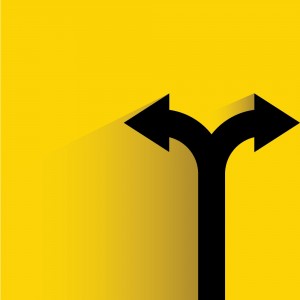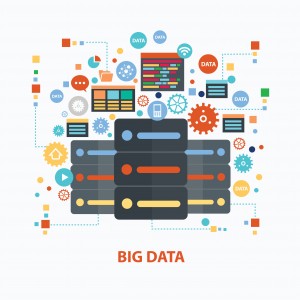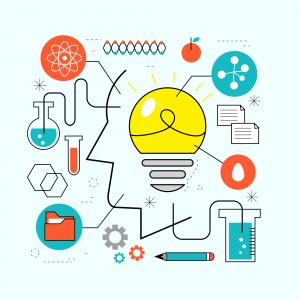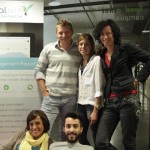Barcinno Guest Post: Data Collection and Personalisation by Jonathan Fletcher of Vreasy.
Why Personalisation Trumps Choice Every Time
Choice was once the pinnacle of consumerism. Variety, modifications, and optional extras were seen as final touches being added to a society moving toward consumerist perfection. The ultimate freedom to choose meant that everyone had the option to find the product that was perfect for their specific needs and tastes. But as choice increased, expectation followed. People were left with a sense that if their choices failed to overwhelm them, they had failed. We are expected to analyze each option and make a reasoned decision based on a logical review of factors such as quality, price, and volume. Yet with the growth in the number of choices for every aspect of daily life, this was quickly unsustainable.
 The expectation that we will always choose correctly makes no sense. Even our own tastes cannot be trusted 100% of the time. How many times have you ordered something in a restaurant, only to be disappointed, not by the food, but by your own choice? Now, imagine having to choose from hundreds, if not thousands of possible permutations for something more esoteric, like your stereo system. An ultra-low 16hertz might generate an approving nod, but who is really capable of evaluating and foreseeing the results of this choice against thousand of other possible permutations?
The expectation that we will always choose correctly makes no sense. Even our own tastes cannot be trusted 100% of the time. How many times have you ordered something in a restaurant, only to be disappointed, not by the food, but by your own choice? Now, imagine having to choose from hundreds, if not thousands of possible permutations for something more esoteric, like your stereo system. An ultra-low 16hertz might generate an approving nod, but who is really capable of evaluating and foreseeing the results of this choice against thousand of other possible permutations?
Yet choice is still popular and abundant. As an example, Starbucks has around 19,000 different configurations for ordering a drink. Choice is a cornerstone of one of the most successful business models in existence but when measured, an excess of choice is actually frustrating, results in a lack of pleasure and fewer eventual purchases.
From The Paradox of Choice:
The booth displayed either a small assortment of 6 jams or a large assortment of 24 jams.
In line with the idea that people are attracted by large assortments, the authors found that more consumers approached the tasting booth when it showed the large assortment as compared to the small assortment. Yet, 30% of consumers who saw the small assortment of 6 jams bought, while the group that could taste from an assortment of 24 jams, only 3% purchased.
We don’t want to choose, we want the best option available. Choice makes us think that we will find this ‘perfect’ option, yet this is rarely the case. So, rather than choice, we require a personalized service – where our previous choices are known and we are presented with a select few favorable options, reducing the element of risk and loss associated with making the wrong choice. We want to have our desires second guessed for us, complex algorithms that can pluck our truest wants from inside a tangled sub-conscious.
This leads to a stalemate. How do you provide personal and individual service without paralysing people with choice?
Data collection and personification remove the weight of a wall of choice. You collect information based on previous transactions and use customer discovery to reduce the number of unsatisfactory choices a customer has to disregard.
 Think of this example. You are offered a choice between rooms at a hotel, the Grand Deluxe suite and the Royal Crowne suite. Faced with these similar, vague signifiers your choice is not based on empirical evidence but a muddled collection of connotations, memories, expectations and associations.
Think of this example. You are offered a choice between rooms at a hotel, the Grand Deluxe suite and the Royal Crowne suite. Faced with these similar, vague signifiers your choice is not based on empirical evidence but a muddled collection of connotations, memories, expectations and associations.
Now, imagine if the choice was made for you, based on your previous decisions. ‘As a loyal guest, we have given you the Royal Crowne suite. We’re sure you’re going to love it.’
The basis of this may be just as arbitrary as the customer’s initial choice but with the responsibility of choice removed, there is a certain assumption that the process behind the choice is less subjective, and based on both a higher level of product knowledge and data learned from past behaviors.
If you were to offer the same guest a choice between a list of fifty similar vacation properties to stay, with one hundred optional extras to choose from, your likelihood of actually receiving a booking falls drastically. The guest has little to no product knowledge so when actually faced with the decision, they are lost.
While the idea of choice still seems attractive, when a choice is made, it is not made with a certainty that this is the best option but with a ‘good enough’ approach. The secret to capitalizing on our apparent love for choice yet the inertia it causes lies in personalisation. This means removing certain levels of choice depending on the customer or guest we are dealing with, whilst having a lot of potential options to generate initial interest.
Data collection and customer discovery are the key steps in removing an excess of choice. The role of data collection technology that can use this data is to guide customers through an experience with fewer useless distractions or choices with an unclear positive and negative outcome. The industry leading the way in using this data to provide a better experience and generate more income is the travel and accommodation sector. Guests and passengers are the perfect test case because there are multiple variables and choices to be made with very little knowledge of the potential best case outcome of these choices.
For example, if you ask a guest of a property which direction they would like their room to face, this is an example of a choice with a potential risk of dissatisfaction yet very little actual resources to base the decision on. Now, if had information that told you that this guest had booked a room with a sea view four out the last five times, you can present the choice in a whole new way: ‘We can provide a room with a sea view’.
Rather than making customers imagine the potential negative outcome of making a poor choice, you tap into their positive memories and remove the legwork of working out which room would be the best fit for their specific tastes.
Technology is giving us the foundation to provide a narrower frame of choice, without limiting our freedom and autonomy.
 Collecting personal information, past transaction data, and all settings and preferences remove time and labor from customer discovery and allows a quicker connection between host and guest, business and customer.
Collecting personal information, past transaction data, and all settings and preferences remove time and labor from customer discovery and allows a quicker connection between host and guest, business and customer.
Technology that attempts to synthesize a connection between people rarely succeeds. It should not aim to replace – but enhance this connection. Using data simply affords you more time and resources to be a host and manager, and learn your customers preferences naturally.
Vreasy is a property management and guest services system that learns your guests’ preferences. It collects booking information, personal tastes, and gives you a platform to cater to every trip and every guest without just providing guests with a confusing maze of choices to navigate through.
With Vreasy, each booking received adds to your knowledge and ability to provide personalisation. It is designed to use the data required for a booking, and the steps involved to build detailed customer profiles, automated suggestions, leading to more satisfied guests and higher revenues due to repeat customers and a high uptake of value-added services.
This business model allows you to still offer the variety and abundance of choice that gives you the largest potential customer base without having a high percentage of abandoned sales or bookings due to offering too much choice.
There is still the freedom of having near-unlimited choice yet without the pressure and confusion. A system to personalize and then automate each guest or customer’s experience will be an antidote to the current maze of choice and customisation we are faced with.







Leave a Reply